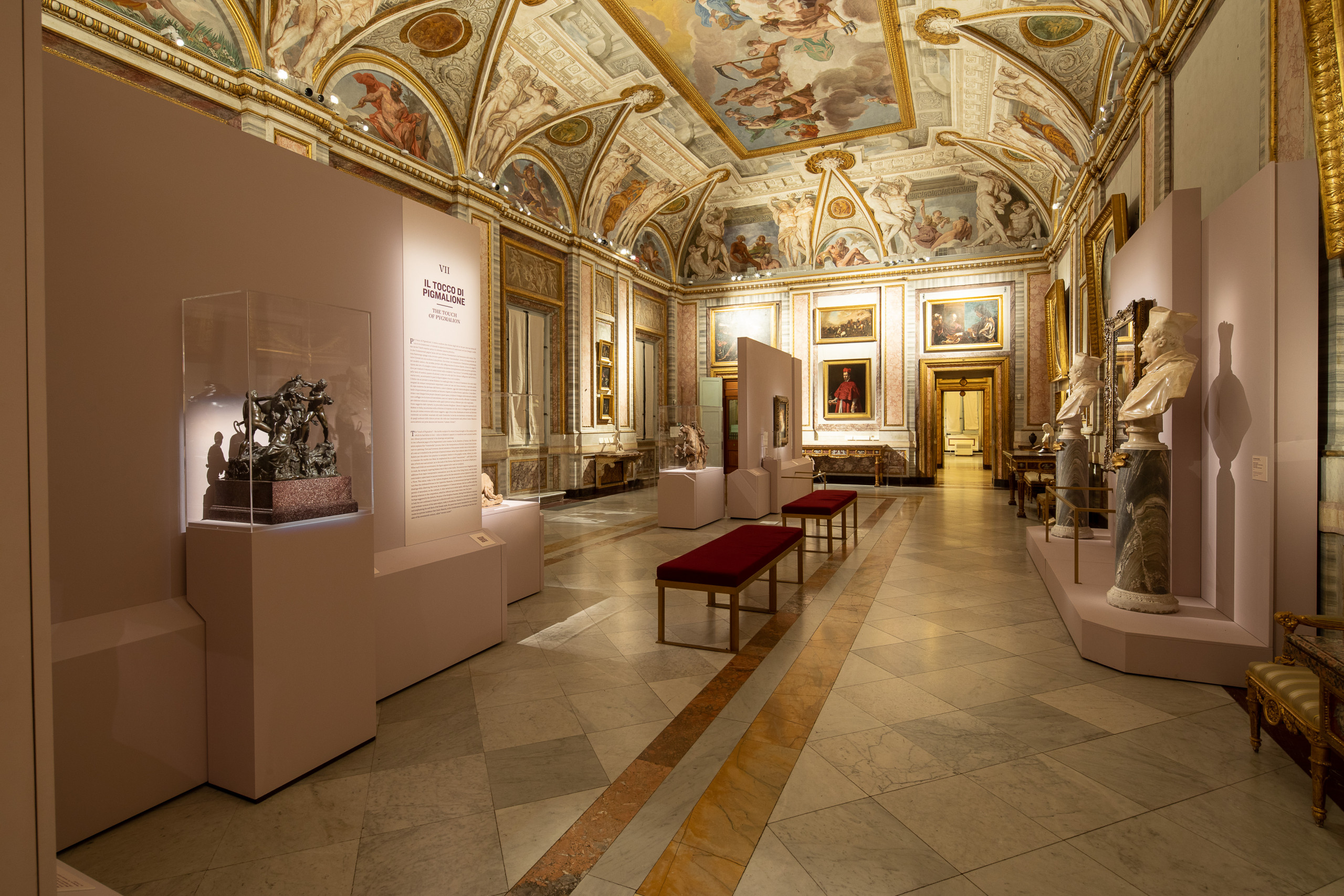THE TOUCH OF PYGMALION

The “touch of Pygmalion” – the mythic sculptor for whom Venus brought to life a statue with which he had fallen in love – refers to Rubens’s capacity to transform inert ancient marble into vibrant pictorial material in his drawings and paintings. In two influential pages of his fragmentary Latin treatise On the Imitation of Statues, the Flemish artist explains this “trans-
media” process, that is, the transposition of formal values from a sculpture to a painting. First and foremost, slavish, imitation of the ancient models was to be avoided at all costs as it resulted in the portrayal of painted statues rather than subjects taken from real life. Rubens put this advice into practice in exemplary fashion in his graphic works, where, in order to translate the marble into flesh, he emphasized the so-called “maccaturae” – soft folds of the skin of both men and animals (as in the neck of the Farnese Bull drawn by the artist in black pen). When such folds are accentuated, the figure appears alive and not sculpted.
In truth, the Antiquity inspiring Rubens was in fact a vital reality. His sources were fragments with additions from major interpretative restorations (as in the case of the Dying Seneca) and at times even modern copies based on ancient models, such as the late sixteenth-century Spinario or Boy with a Thorn.
This statue, today in the Galleria Borghese, was more accessible in the seventeenth century than the celebrated bronze in the Capitoline Museums. As demonstrated perhaps by Rubens’s drawings while observing this work, his investigation of classical statuary did not conflict with the pursuit of naturalism; on the contrary, it often served as an initial spark, offering an occasion to develop solutions to the composition, which he reflected upon many times over the years.
Perhaps suggested by the Spinario, the pose of the Borghese Susanna (dating from Rubens’s sojourn in Italy but not confirmed in Scipione’s collection until 1622) is echoed, for example, by one of the most intimate versions of the same subject, today in Stockholm. Painted on his return to Antwerp and emphasizing the soft flesh of the female nude, the panel was surely intended for one of those rooms in a private residence that Giulio Mancini, in his Considerations on Painting in the first decades of the seventeenth century, called “retreat rooms”.